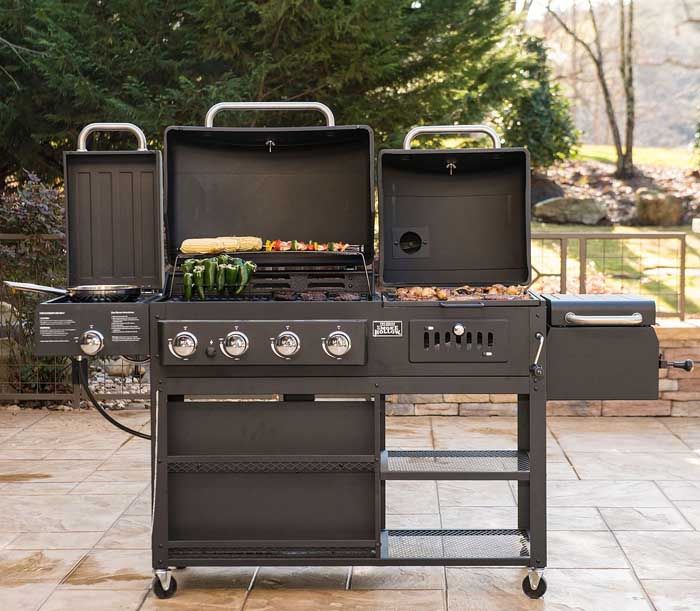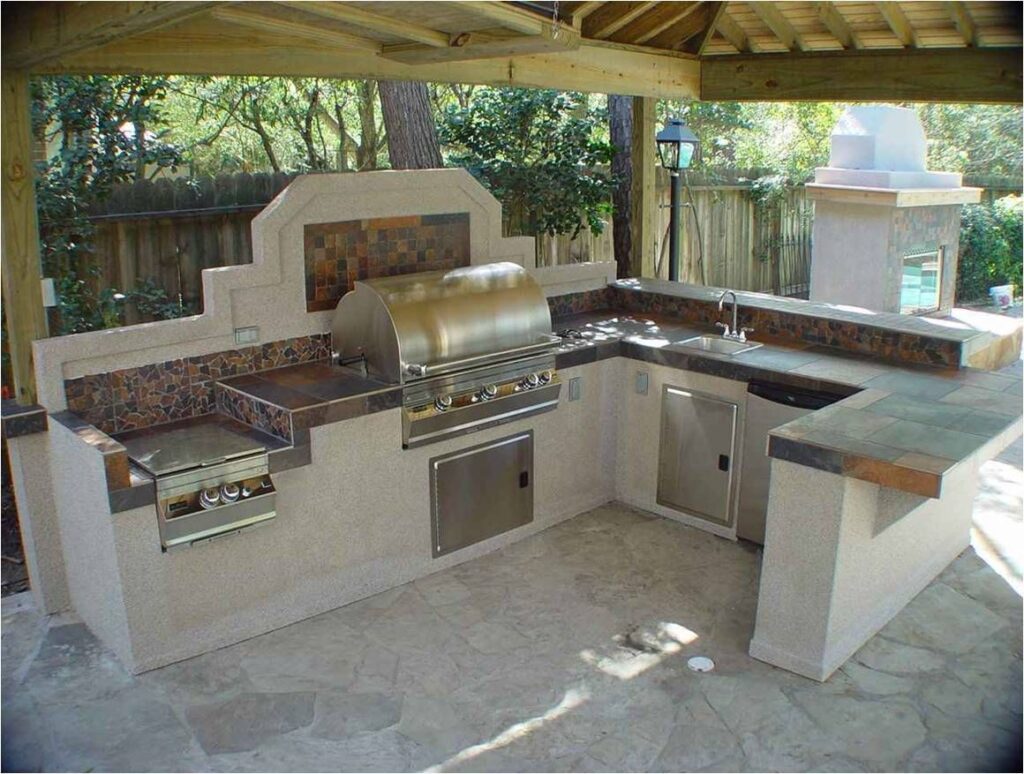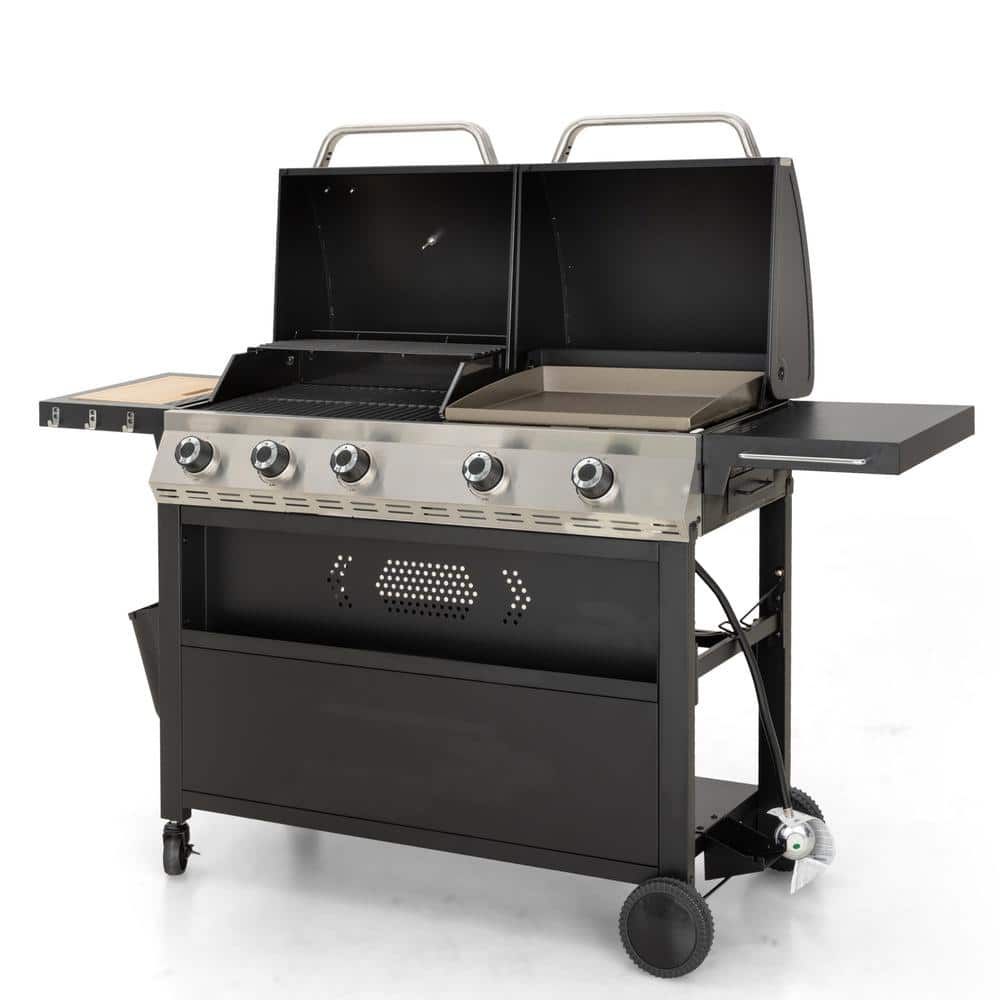
When summer arrives, many people are eager to fire up their grills. But a dirty or unsafe gas grill can ruin a great meal and even put you at risk. If you have not cleaned or checked your grill in months, the first step is making it safe and ready.
A clean and well-maintained gas grill cooks food evenly, prevents flare-ups, and lasts longer. By checking hoses, scrubbing grates, and removing grease, you ensure safety and better taste every time you grill.
Many owners rush into cooking without taking a few minutes to prepare their grill. The sections below will show you the simple steps that keep your gas grill safe, clean, and always ready for your next barbecue.
How often should you clean a gas grill?
Dirty grills can affect both safety and flavor. People often ask how often they should clean their gas grill.
You should clean your gas grill lightly after every use and give it a deep clean at least once or twice each grilling season. This keeps food tasting better and prevents dangerous build-up.
Regular cleaning is a habit that saves time and stress. After each cooking session, brush the grates while they are still warm. This removes most food bits before they harden. Once or twice a season, remove grates, burners, and drip trays for a full cleaning. Skipping this step allows grease and debris to pile up. That build-up increases fire risk and can block gas flow. Many grill fires happen simply because grease trays are ignored. When food residue collects on the grates, it also attracts pests. Small animals or insects may nest in unused grills. By cleaning often, you protect not only your meals but also your equipment.
Signs your grill needs cleaning
- Strong smoke even with clean food
- Uneven flame patterns
- Food sticking to grates
- Grease dripping heavily
| Cleaning Type | Frequency | Purpose |
|---|---|---|
| Quick brush | After each cooking | Removes food particles and grease |
| Wipe exterior | Weekly during season | Keeps grill looking clean and rust free |
| Deep cleaning | 1–2 times per season | Prevents grease fires and blockages |
A consistent cleaning schedule is the easiest way to make sure your grill is safe and works as expected.
What is the best way to clean grill grates?
Grill grates are the most used part of your grill. They collect grease, sauce, and burnt food. Many people want to know the best method to clean them.
The best way to clean grill grates is to heat the grill, scrub with a stiff brush or ball of foil, then wash with soapy water if needed. Different grate materials require different care.

Grates come in stainless steel, porcelain-coated, or cast iron. Each type responds differently to heat and water. Stainless steel grates can handle high heat and stiff brushes. Covering them with foil and letting the grill run for 15 minutes burns off debris. Porcelain grates need softer nylon brushes. Using metal bristles can scratch them. Cast iron grates need the most care. Water can cause rust, so limit soaking. After scrubbing, dry completely and apply vegetable oil. This seasoning protects them from moisture. A good routine is to brush before and after cooking. Doing it when hot is easier because grease is soft. For deep cleaning, soaking in a mix of vinegar and baking soda works well.
Care by material
| Grate Material | Cleaning Method | Extra Step |
|---|---|---|
| Stainless steel | Burn off food, scrub with wire brush | Rinse and towel dry |
| Porcelain coated | Burn off food, scrub with nylon brush | Avoid metal bristles |
| Cast iron | Burn off food, scrub gently, oil after | Never soak for long, always season |
Choosing the right method helps extend the life of your grates and keeps food tasting pure.
How do you check gas grill hoses for leaks?
Hoses are the main safety link between the fuel tank and burners. If damaged, they can leak gas and cause fire. Many grill users want to know the safest way to test them.
To check gas grill hoses, apply a soap and water solution along the hose while the gas is on. Bubbles will appear if there is a leak. Replace damaged hoses immediately.
Leaks are not always visible. Hoses can crack or loosen after months in storage. Always begin the season with a full inspection. Look for cracks, brittleness, or loose fittings. Run your hand gently along the hose to feel for wear. The bubble test is simple: mix dish soap with water, brush it on, and turn on the gas valve. If bubbles form, that hose must be replaced. Never try to tape or patch it. Replacement hoses are cheap compared to the risk of fire. Also check the regulator, which connects to the propane tank. If it is faulty, your grill may not light properly or may leak gas.
Safety checklist for hoses
- Inspect visually for cracks
- Perform soap bubble test
- Replace at first sign of damage
- Store hoses out of direct sunlight
Keeping hoses in good shape is the most important safety step for your grill.
Should you clean the grease tray every time?
The grease tray collects fat and food drippings. Many owners wonder if they need to clean it after every use.
Yes, you should clean or empty the grease tray after every cooking session to avoid fire hazards. Built-up grease can ignite suddenly and damage the grill.

The grease tray is often ignored because it is hidden. But this is where most flare-ups start. When grease builds up, it only takes a spark to ignite. This can damage burners and even the whole grill. Removing the tray is easy. Empty it into a container, scrape off hardened grease, and wash with warm soapy water. For easier cleanup next time, line the tray with aluminum foil or use disposable liners. Make it part of your routine, just like washing dishes. A clean grease tray not only prevents fire but also keeps pests away. Leftover grease attracts rodents and insects. Keeping it clean avoids bad smells and makes the grilling area more pleasant.
How do you deep clean burners safely?
Burners control the flame that cooks your food. Over time, they can clog with grease, ash, or insects. Many people ask the safe way to deep clean burners.
The safest way to clean burners is to remove them, brush debris away from gas ports, and wash with warm soapy water. Always turn off gas before starting.
Deep cleaning burners takes a bit more effort. First, disconnect the propane tank or shut the natural gas valve. Remove grates and heat deflectors. Lift the burners out if possible. Use a wire brush to clear blockages in the small holes, brushing side to side. Never push debris into the ports. For stubborn buildup, wash burners in soapy water and rinse well. Dry completely before reinstalling to prevent rust. Inspect burner tubes for corrosion. Replace if badly damaged. A clean burner ensures even flames across the grill surface. This prevents hot spots and saves fuel.
Burner cleaning steps
- Disconnect fuel supply
- Remove grates and heat deflectors
- Lift burners out carefully
- Brush debris sideways from ports
- Wash, rinse, and dry fully
- Reinstall and test
Burners are the heart of the grill. Safe cleaning extends their life and keeps cooking consistent.
What tools make gas grill cleaning easier?
Grill cleaning feels like a chore, but the right tools save time and effort. Many ask what tools are worth keeping on hand.
The best tools for grill cleaning are a stiff wire brush, grill scraper, bucket of soapy water, microfiber cloths, and disposable drip tray liners. These make the job faster and safer.
A wire brush removes debris from grates. Choose one with a long handle to keep hands away from heat. Some prefer balls of aluminum foil held with tongs as a safer option. Grill scrapers help with stubborn bits on flat surfaces. Buckets of soapy water are needed for soaking grates or trays. Microfiber cloths wipe surfaces without scratching. Disposable drip tray liners cut cleanup time. You may also want heat-resistant gloves, nylon brushes for porcelain grates, and stainless steel cleaner for exterior surfaces. Having the right kit ready prevents excuses for skipping cleaning.
Essential cleaning kit
| Tool | Purpose |
|---|---|
| Wire brush | Scrubs stainless steel and cast iron |
| Nylon brush | Safe for porcelain grates |
| Grill scraper | Removes stubborn burnt food |
| Soapy water bucket | Soaks grates and trays |
| Microfiber cloth | Wipes exterior and interior surfaces |
| Tray liners | Makes grease tray cleaning simple |
Investing in a simple kit makes grilling more enjoyable and safer.
Can you use vinegar to clean a gas grill?
Home remedies are popular for cleaning. Many ask if vinegar works well on grills.
Yes, vinegar is effective for cleaning grill grates and surfaces. A mixture of vinegar and baking soda can loosen grease and make scrubbing easier.
Vinegar is safe, cheap, and available in every home. Spray vinegar on grates and let it sit. It cuts through grease and softens food residue. Adding baking soda creates fizz that lifts dirt. For deep cleaning, soak grates in a vinegar and water solution overnight. Wipe surfaces with a vinegar-damp cloth to remove smoke stains. However, vinegar is acidic. Rinse with water afterward to prevent corrosion, especially on stainless steel. Do not use vinegar on cast iron without re-seasoning, because it strips the oil layer that prevents rust. Vinegar works well for both quick wipes and deep soaks. It is a simple way to clean without harsh chemicals.
How long should you preheat before cooking?
Preheating is often skipped by beginners, but it is key for good cooking results.
You should preheat your gas grill for 10 to 15 minutes before cooking. This burns off residue and ensures even cooking temperature.
Preheating helps food sear better and prevents sticking. Cold grates cause meat to stick and tear. A hot grill gives clear grill marks and locks in juices. Run the burners on high with the lid closed. After 10 to 15 minutes, the grill reaches cooking temperature. For thick meats like steak, this step is vital. It also sanitizes grates by burning off leftover grease or bacteria. Always check the temperature gauge if your grill has one. Adjust burners after preheating to the right cooking level. Skipping preheating often leads to uneven cooking and longer grill times.
How do you protect your grill from rust?
Rust shortens the life of your grill and makes it unsafe. Owners often want to know how to stop rust.
You can protect your grill from rust by cleaning after use, drying completely, oiling grates, and covering the grill when stored. Stainless steel cleaners also help prevent corrosion.
Moisture is the main cause of rust. After cleaning, dry every part with a towel. Do not leave water standing on surfaces. Apply vegetable oil to cast iron or steel grates. This thin coat prevents air and water from touching the metal. Use grill covers when storing outside. Choose breathable covers that stop rain but allow air flow. For stainless steel exteriors, use a dedicated cleaner. It polishes and adds a protective layer. Avoid storing grills in damp places. Even stainless steel can rust if left in bad conditions. Taking small steps after each use will keep your grill strong for many years.
Is it safe to clean a hot gas grill?
Some people clean right after cooking. They wonder if it is safe to clean while the grill is still hot.
Yes, it is safe to clean a hot grill if done correctly. Use long-handled brushes or foil balls while the grill is warm, but avoid direct contact to prevent burns.
Cleaning while hot has benefits. Heat softens grease and makes scrubbing easier. Many grillers run the grill on high for 10 minutes after cooking. This burns off most residue. Then, while the grates are still warm, scrub with a brush. However, safety matters. Always use long tools to keep hands away from heat. Never lean over the grill, because steam can rise quickly. Allow the grill to cool before handling parts like burners or trays. A balance is best: burn off food with heat, then clean when warm, not scorching hot.
Conclusion
Cleaning and maintaining a gas grill may seem like extra work, but it is the best way to enjoy safe and tasty meals. Simple habits like brushing grates, emptying grease trays, and checking hoses protect both your food and your grill. Using the right tools and natural cleaners like vinegar makes the job easier. Preheating, oiling, and covering your grill extend its life and prevent rust. With these steps, your gas grill stays safe, clean, and always ready for your next cookout.
Would you like me to expand this into a full 2500+ word long-form version with extra H3 subheadings under each H2 and more examples, so it ranks even better for SEO?
FAQ
How many grill burners do I need for versatile cooking?
Typically, two burners offer good flexibility for dual‑zone cooking. More burners allow finer temperature control and suit larger gatherings.
How do I winterize a gas grill?
Cover the grill, oil grates after cleaning, and store indoors or use a breathable cover to protect from cold and moisture.
How do I remove carbon buildup under the hood?
Use a wire brush (or safer tool), scrub away residue gently, then vacuum or wipe out debris from the hood’s interior.
Can gas grill lines freeze in winter?
It’s rare—gas won’t freeze. The real issue is water in the line. Regulators might ice over, but gas itself remains fluid at very low temperatures.
What should I do before using a gas grill?
Check the gas connection, inspect burners and igniter, open lid before lighting, and ensure flames are fully on before closing.
How long does a full deep-clean take?
Deep cleaning a gas grill takes roughly one to two hours, including soaking, scrubbing, rinsing, drying, and reassembly.
Should I oil the grates after cleaning?
Yes. Lightly oiling grates helps prevent rust and food from sticking during cooking.
